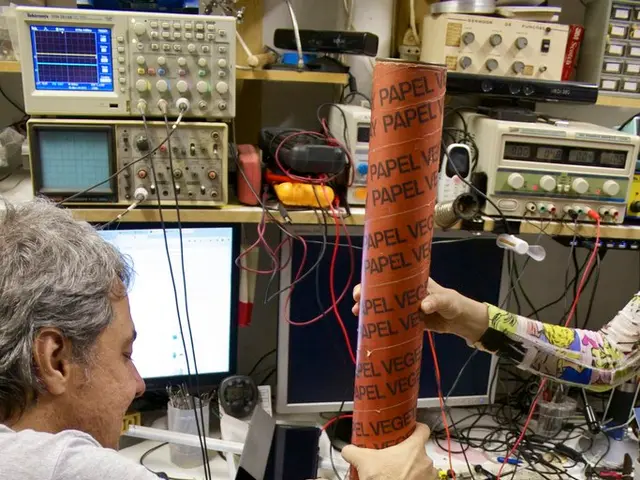Utilizing Magnetism's Power: Various Applications of Magnetism in Modern Technology, Transforming Repulsion into Attraction
Magnetism's Wide-Ranging Impact on Modern Technology
Magnetism, a fundamental physical phenomenon, plays a pivotal role in various modern applications, from electric motors and medical treatments to energy harvesting and data storage.
Electric Motors and Generators
Electric motors and generators, a common sight in factories and robotic systems, rely on magnetism to convert electrical energy into mechanical energy or vice versa. Neodymium magnets, known for their high power density, are extensively used in these devices due to their ability to create strong magnetic fields essential for motor torque and energy conversion [1].
Medical Applications
In the realm of medical treatments and diagnostics, magnetic technologies are indispensable. High-grade neodymium magnets are used in Magnetic Resonance Imaging (MRI) machines to generate the strong, stable magnetic fields needed for high-resolution imaging of soft tissues [1][2]. Magnetic arrays also enhance nuclear magnetic resonance (NMR) spectroscopy and are used in magnetic sensors for robotic surgery and diagnostic tools. Furthermore, magnetic therapy devices utilizing neodymium magnets target pain relief and physiotherapy. Miniaturized magnets support hearing aids and cochlear implants [1].
Energy Harvesting and Efficiency
Magnetic and superconducting materials contribute significantly to energy harvesting and efficiency. Superconducting cables allow for zero resistance current flow, enabling long-distance, low-loss power transmission. Superconducting generators reduce size and weight while improving efficiency, and superconducting magnetic energy storage systems (SMES) store and release large amounts of energy rapidly to stabilize power grids [2].
Data Storage and Advanced Electronics
New materials combining magnetism and semiconductors are paving the way for spintronic devices, which exploit electron spin rather than charge, offering energy-efficient alternatives to traditional electronics. These approaches could revolutionize artificial intelligence systems by reducing their large energy and water demands. They also hold potential for more practical quantum computers operating at higher temperatures than current extremely cold systems [3][5].
Environmental Applications
Magnetism is also being used in environmental applications such as geophysical surveying for oil and gas exploration and in water purification systems. Magnetic nanoparticles are being researched for their potential in targeted cancer treatment and other medical applications [4].
Magnetic Levitation
Magnetic levitation technology eliminates friction and reduces wear and tear by suspending objects in mid-air using two magnetic fields. This technology, often associated with maglev trains, can significantly improve transportation efficiency [6].
As we continue to explore and push the boundaries of magnetism, we can expect even more innovative applications to emerge, driving progress and transforming our world. From the tiny magnetic implants that help us hear, to the powerful magnets that propel trains through the air, magnetism's impact on our daily lives is undeniable.
[1] https://www.sciencedirect.com/topics/materials-science/neodymium-magnet [2] https://www.sciencedirect.com/topics/engineering/superconductivity [3] https://www.sciencedirect.com/topics/physics-and-astronomy/spintronics [4] https://www.sciencedirect.com/topics/chemistry/magnetic-nanoparticles [5] https://www.sciencedirect.com/topics/physics-and-astronomy/quantum-computing [6] https://www.sciencedirect.com/topics/engineering/magnetic-levitation
Electric Motors and Technological InnovationThe advancements in electric motors and generators are largely influenced by magnetism, as they employ neodymium magnets to convert electrical energy into mechanical energy, thereby pushing the limits of modern technology [1].
Advancements in Medical ScienceIn the forefront of medical treatments and diagnostics, magnetic technologies, such as MRI machines and magnetic therapy devices, relying on neodymium magnets, play a crucial role, shaping the trajectory of science and medicine [1][2].




